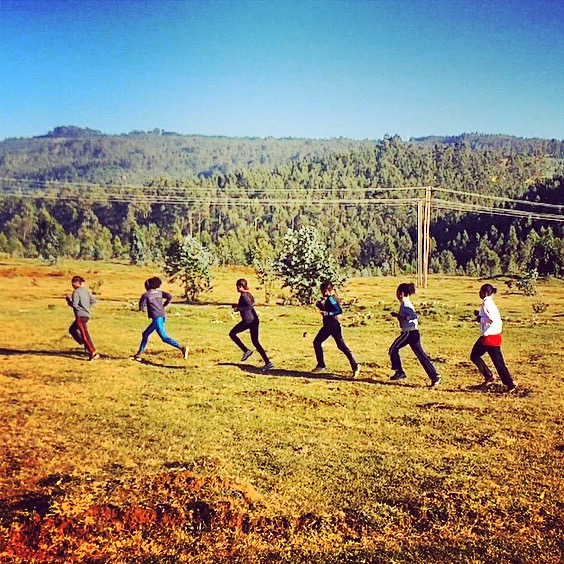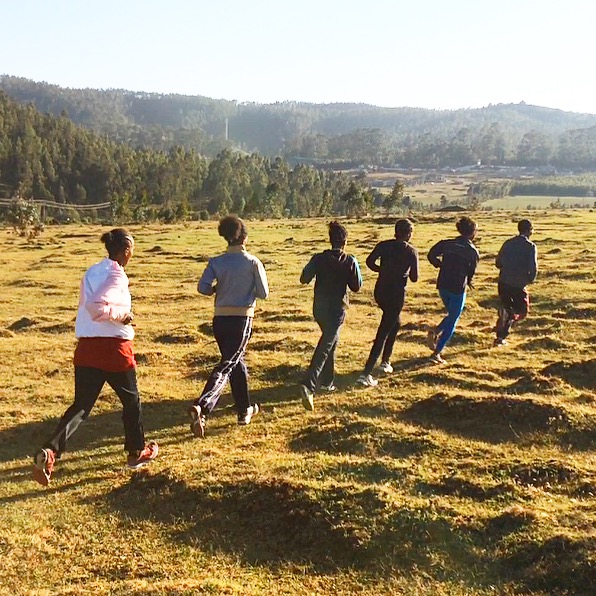 We headed out for my final run, our second run of the day— an easy 40 minutes through farm fields and forest. In Ethiopian running culture, groups of runners run in a single line. I have never asked the exact reason for this, but would guess it is because the terrain can be narrow and unpredictable. There is also a system in which everyone points to the ground or snaps their fingers when crossing an uneven patch of land — alerting the person behind them to tread cautiously.
We headed out for my final run, our second run of the day— an easy 40 minutes through farm fields and forest. In Ethiopian running culture, groups of runners run in a single line. I have never asked the exact reason for this, but would guess it is because the terrain can be narrow and unpredictable. There is also a system in which everyone points to the ground or snaps their fingers when crossing an uneven patch of land — alerting the person behind them to tread cautiously.
Despite running in a line formation, laughter and chatter provided the soundtrack for our run— often sounding like a game of telephone. Since this was my last run with the Yaya Girls, they let me set the route at the front of the line, leading the five women on my desired path. Within minutes of running through the first farm field, we dodged a herd of cows. As we had to jump around to avoid the impassive animals, one of the girls began to yell “cow” in English, which caused an eruption of giggles from the rest of the line. That past week in English class, we had learned the names of farm animals and played a game of charades by impersonating different animals, calling out their sounds.
 After the cows, we saw a dozen stunning horses— whites, browns, and pintos. The girls greeted the horses with boisterous declarations of “horse!” We then passed a groups of donkeys with water jugs on their backs, headed to the same water spot where the Yaya Girls typically fill their water containers.
After the cows, we saw a dozen stunning horses— whites, browns, and pintos. The girls greeted the horses with boisterous declarations of “horse!” We then passed a groups of donkeys with water jugs on their backs, headed to the same water spot where the Yaya Girls typically fill their water containers.
From the farm fields, we crossed a road to the forest entrance. In the forest, the sound of the girls’ feet and relaxed breath filled my ears as we weaved around tree stumps. Another interesting observation of Ethiopian running culture is that instead of running in a straight line, people make mini loops around trees, due to the fact that the trails are often hard to differentiate and even, nonexistent.
Suddenly, one of the Girls yelled “tota!” At first, I thought that something was wrong, but when I turned back to look, they had stopped running and were pointing to a family of monkeys. We had not learned their name in English class yet, so I motioned to the girls and said, “monkey.” Similar to during class, the group responded by repeating the word “monkey.” We were then back on our way, running through the forest— students of language, running, and life.








